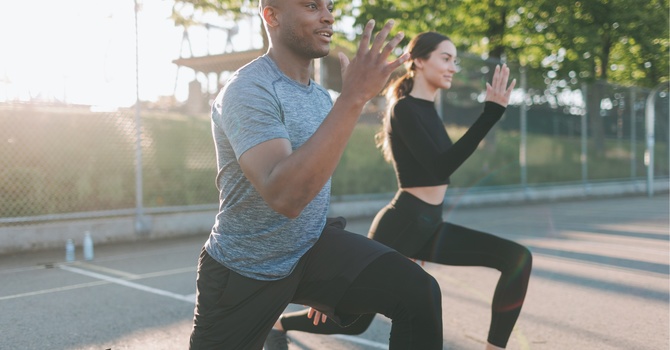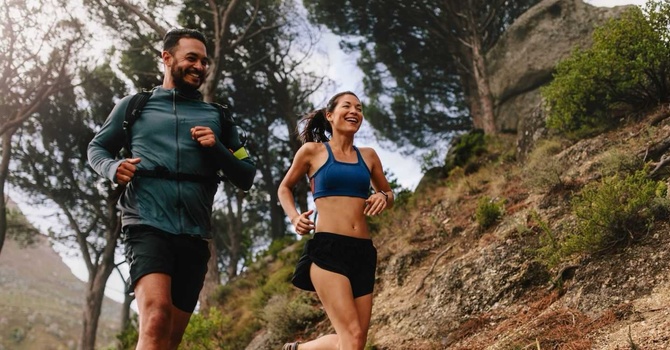Core Stability - Defined
Core Stability is an often-used term in the medical, fitness and wellness literature. And interestingly there is not a consensus about what exactly comprises core stability as it relates to human movement.
As a Doctor of Physical Therapy and a Human Movement Specialist, my perspective incorporates the elements required for human movement. In other words, how we move as a whole person.
Human Movement – Our Movement Requires Core Stability
Human movement is a complex process – comprised of intentional and reflexive patterns – incorporating our brain (sensory and motor pathways) and our peripheral nervous and musculo-skeletal systems. We move proximally through our vertebral column, shoulders and hips, and then through our arms and legs to achieve whole body involvement. Core stability is an essential element - a prerequisite - for human movement.
What is Core Stability? – Core Stability Defined
For every movement there is an equal and opposite reaction. And core stability sets the stage for your body to move. Our core stabilizing muscles – anatomically close to our vertebral column – are designed to position and move our vertebral joints with precision. This allows our shoulders, arms, hips and legs to move without strain on our back and neck joints.
When Do We Use Core Stability?
When you shift your body weight or stand on one leg, your foot and ankle muscles work with your hip, thigh, abdominal and trunk musculature to create balance and stability. Or when you use your hands or arms to carry something, you should have core stabilizing musculature engaged in your shoulders, neck, trunk, legs, ankles and feet as well Core stability and balance go together - which requires that you have active core muscular engagement along with activated foot and ankle balance responses. We don't move our body parts in isolation. We move in coordinated whole body movement patterns.
How Do We Use Our Core Stability?
With practice and guidance, you will develop body awareness – including diaphragmatic breathing and key neuro-muscular recruitment patterns - for your abdominals, pelvic floor, hip, trunk, shoulder, ankle and foot musculature. We'll include verbal, visual and tactile cues to be sure you feel and understand what muscles and movement patterns you are using.
It's Natural
As babies, toddlers and children we learn to move with core stability principles. For each of our movement milestones - turning our head, rolling, reaching, sitting, crawling, standing, walking and balancing - our human movement patterns are built on core stability as a basis for the development of our whole body movement. This includes interconnected (nearby and distant) areas of our body. We move our body for activity and interaction with our environment. Learning to move while maintaining core stability is essential for healthy human movement, posture and balance. Additionally, human movement along with the interaction of gravitational and resistive forces is necessary to stimulate the growth and strength of our muscles, bones and joints as well as for the development of our central and peripheral nervous systems. In neuro-developmental terms, we learn to move with healthy body mechanics and movement patterns that never exceed the basis of our developing core stability.
Poor Core Stability - The Risks
The challenge in our industrialized (and more sedentary) society is that the average person’s peak of physical activity level in the U.S. is at age 6. So, you can see how the adage "use it or you lose it" applies to our core stability. For many adults that means we have had a decline in activity level – with resulting poor core stability and compensatory habits for movement and posture for years or decades. Our muscles should act as shock absorbers around our joints, so when we lose core stability strength and balance, this places increased strain on our joints, tendons and ligaments. In the U.S. we have an epidemic of neck, back and joint pain along with increased rates of over-weight and deconditioned status and falls.
Good News – It’s Never Too Late To Develop New Habits For Healthy Movement!
You can learn to re-engage your core stabilizing musculature. You can learn to take strain off your back, neck and joints – and to use your muscles as shock absorbers around your joints. As humans, we are designed to move well without pain.
Your body is resilient and you will respond positively. There is always something you can do to re-train and to achieve healthy movement patterns. Improving strength and balance while incorporating body awareness requires changing your movement habits. With daily practice and time - typically about 2-3 months - you will see significant improvements in your muscular strength, endurance and balance. Changing habits initially requires significant cognitive effort - thinking about how you are moving with enhanced body awareness. As you gain strength/endurance and as your body awareness and movement patterns improve, you will develop automatic habits that incorporate core stability naturally. You will learn how to engage your core stability automatically in everything you do - as we are designed to do for healthy human movement.
New Habits for Posture, Movement, Balance & Wellness
I look forward to working with you in our Move for Health Physical Therapy classes – as you develop body awareness, strength, balance with core stability. To move well without pain – during class and with strategies to achieve core stability with your activities outside of class. You'll learn the tips, tools & strategies you will need to feel and apply core stability principles to all aspects of your life.
I'm looking forward to our next class together!
Darcy



